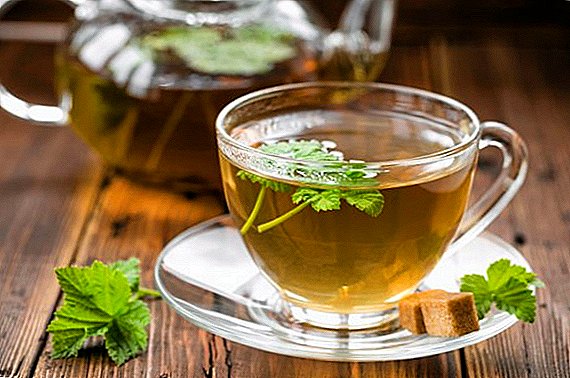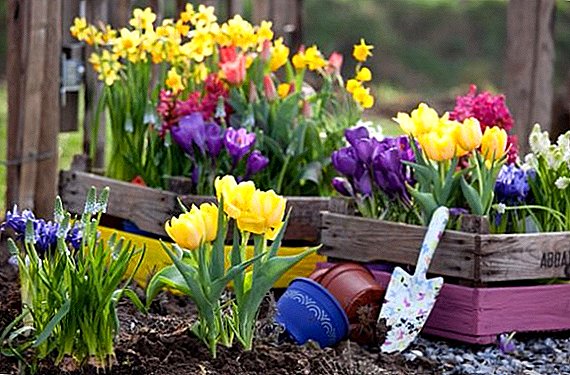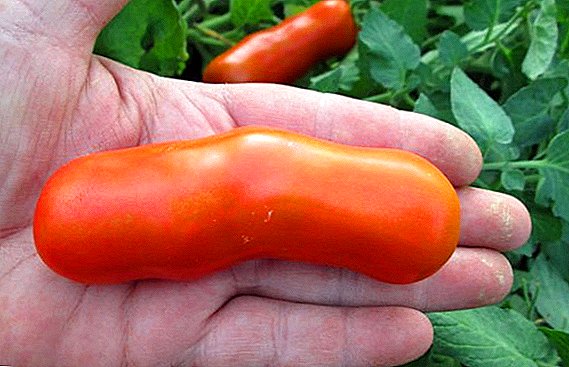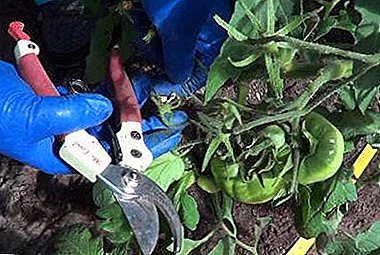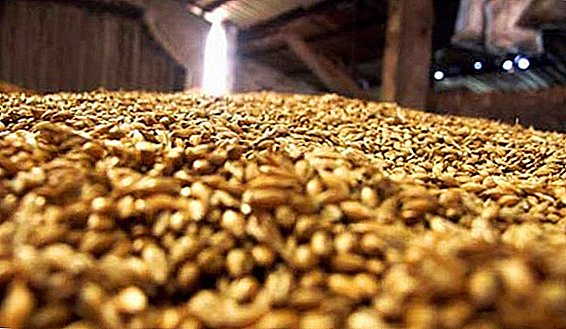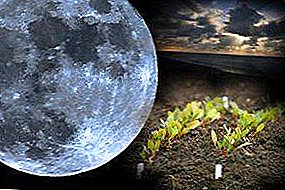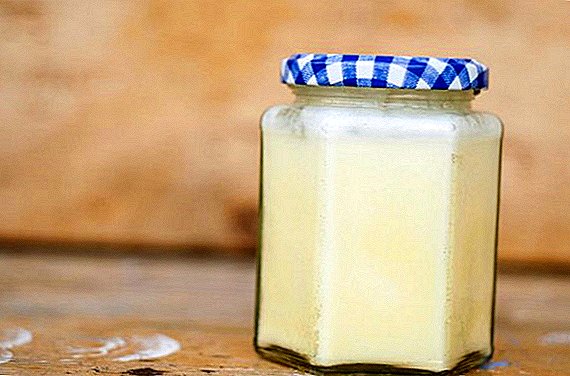
Pelargonium Ludwigsburg Flyer is considered a dwarf variety. But despite its miniature size, Ludwigsburg blooms profusely and for a long time. It is this quality that made this type popular among growers from all over Europe.
The article describes the rules of cultivation and reproduction of this species, as well as ways to control pests.
Botanical description and history
Pelargonium Ludwigsburg Flyer is a zonal plant, by its texture it is terry. This variety is very compact. However, experienced growers say that there are cases when this species grows quite tall and wide shrubs.
The flyer usually blooms several times a year., buds keep on the branches for a long time. But all this is possible only with proper care, especially it is necessary to observe the mode of irrigation, lighting and temperature. This breed was bred by German breeders, hence its name after the city in Germany: Ludwigsburg.
Appearance
 The described plant is one of the few plants that can boast of its delicacy and fragility. The inflorescences are very large, especially when compared with the overall size of the plant. They are not only lush, but also quite heavy. One bud consists of many tiny flowers.
The described plant is one of the few plants that can boast of its delicacy and fragility. The inflorescences are very large, especially when compared with the overall size of the plant. They are not only lush, but also quite heavy. One bud consists of many tiny flowers.
Pelargonium Ludwig buds regular spherical shape. This gives the plant a very noble look and a unique charm.
If we talk about the color of flowers, then here Ludwigsburg stood out due to the fact that on one bud, you can see the petals of several shades at once - pink, yellow, white and even green.
In the bud, the petals grow in several pieces in one row, this gives additional volume. The foliage of this species also stands out, especially with good lighting. In this case, the color of the leaf plates becomes saturated green, which favorably emphasizes the delicate buds.
Where and how to plant?
Lighting and location
This factor is one of the main in the development of Pelargonium. For this plant you need to provide a lot of light, so that it fully developed and richly bloomed. With an insufficient amount of light, Ludwigsburg will stall in growth, or even completely die.
The fact is that the lack of light leads to a decrease in immunity, which means that diseases and pests become more likely to successfully attack Pelargonium. therefore when choosing a location for the location of this flower is to give preference to the most lit. And in the winter it is necessary to resort to additional lighting. With this light mode in the cold season, the Flyer can release new buds.
An important condition for the development of Pelargonium is regular airing. But at the same time it is necessary to ensure that no drafts form.
Soil requirements
 For the full development of the plant it needs to be planted in the ground, which will be light, loose, free to pass air and water. Such the substrate can be purchased at the store already ready. And you can cook it yourself at home.
For the full development of the plant it needs to be planted in the ground, which will be light, loose, free to pass air and water. Such the substrate can be purchased at the store already ready. And you can cook it yourself at home.
To do this, you need the following components:
- two parts of turf and leaf land;
- two parts of humus and peat;
- one part of large river sand.
Important! When preparing the soil all its components must be disinfected. To do this, these components should be placed in the microwave for a few minutes or the freezer for a couple of hours.
When planting do not forget about the mandatory drainage layer.which is responsible for ensuring that the water in the pot does not stand. Otherwise, such a bog may lead to decay of rhizomes.
How to care?
- Temperature. Pelargonium loves moderate temperatures. They should be kept at the level of 20-22 degrees of heat in the summer, and in winter the air should be slightly cooled - to about + 12-15 degrees.
- Watering. This plant requires regular, but at the same time moderate watering. If there is enough water, then new processes will appear on Ludwigsburg regularly. To moisten the soil should be prepared with water at room temperature, in any case, do not use cold. New watering is carried out only after the soil is dry after the previous moisture.
A sign that the flower lacks moisture are dry leafy plates. Softened leaves signal the opposite effect - an excess of water.
In winter, watering should be reduced to a minimum, since a lot of water in low temperature conditions can cause the appearance of various pests.
- Fertilizers. This plant requires constant mineral supplements. This manipulation must be carried out twice a month. It is better to use for this ready-made complexes purchased in the store. It is necessary to strictly follow the instructions, observing the dosage.Reference! Pelargonium does not tolerate fertilizer organic complexes.
- Crop. This procedure is necessary for the plant in order to form a bush of the correct form. Cut only weak and too long shoots. At the same time, about 10-15 centimeters from these cuttings are left, no more. It is better to do this in early spring - in this way Pelargonium will prepare for a new growing season. About a month after pruning, the plant will be ready for a new active season.
Diseases and pests
Often the diseases of Pelargonium are associated with improper care. Sometimes pests appear on the plant from other flowers. This is often the case when a new exhibit appears in the flower collection.
Root and stem rot
 Such a nuisance is found in Pelargonium quite often.
Such a nuisance is found in Pelargonium quite often.
The reason for this problem is excessive watering. in combination with low air temperatures and high humidity. Signs of rot are black (sometimes dark brown) pigmentation on the lower part of the plant.
Unfortunately, it is impossible to get rid of this ailment. However, you can cut off the top of the flower and root it again.
Vertselleznoe wilting
This disease has a fungal character and affects mainly the inner part of the plant. Prevention of this fungus is disinfection of the substrate before planting., because it is in the ground that the spores multiply, which cause the disease.
Red leaf plates
This process is usually observed in the winter, especially if the pot is standing near the window. Under such conditions, the flower freezes, which is why the leaves turn red. To eliminate this problem, you only need to warm the plant and remove the affected parts. Pelargonium affects the spider mites, aphids and thrips. To get rid of them, it is necessary to treat the plant with an insecticidal drug. The procedure is carried out several times with an interval of seven days.
We named only the most common problems that occur in Pelargonium Ludwigsburg. However, other diseases may occur, although much less frequently. To avoid trouble with the plant, you need to follow a few simple rules:
- do not overmoisten the substrate, give it aired;
- carry out soil disinfection before planting a flower;
- ensure that the Pelargoniums are not very close to each other;
- inspect the plant regularly for diseases and pests in order to start treatment on time;
- arrange quarantine for newly acquired Pelargoniums.
Breeding features
Reference! Ludwigsburg refers to the zonal plants of a hybrid nature.
There are two ways of reproduction: cuttings and seeds.
 If the florist wants to preserve the species characteristics of the mother plant, Pelargonium needs to be propagated by cuttings, since when grown seeds lose a lot of external signs of an adult flower.
If the florist wants to preserve the species characteristics of the mother plant, Pelargonium needs to be propagated by cuttings, since when grown seeds lose a lot of external signs of an adult flower.
Instructions for planting cuttings:
- Cut the stalk, which will be at least three leaves, its length should be at least 7 centimeters. Better to do it in early February. Then there is a chance that in summer the young plant will bloom.
- The scion must be dried by wrapping it in paper.
- Next, put in water until the roots appear.
- After the roots appear, the young flower is transplanted into a permanent pot and placed in a well-lit place.
Cultivation by seeds.
- Sowing material is sown in the prepared soil, slightly they prrushchivayut and cover with glass.
- Put in a bright place.
- The first shoots will appear in 7-10 days.
- As soon as two or three leaves appear on the sprouts, they are planted in separate containers.
Pelargonium Ludwigsburg Flyer has a certain capriciousness in the care, unlike its specific counterparts. This is explained by this species is highly decorativey. Therefore, to maintain its magnificent appearance, they need to provide decent care.


